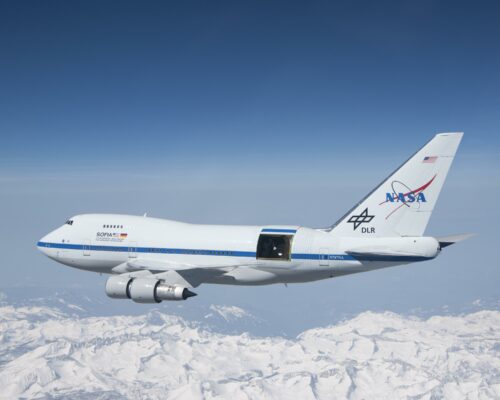Image courtesy of Michael S.P. Kelley, University of Maryland / Discovery Telescope Observatory.
Before our solar system came into existence, in its place was only a metaphorical lump of clay, spinning on a cosmic potter’s wheel. As this lump of gas and dust spun and spun, it flattened out to eventually become the disk from which our Sun and planets formed. Researchers from the University of Minnesota, NASA Ames Research Center, the University of California at San Diego, the University of Maryland, and the Aerospace Corporation recently discovered that comets may have played an important role in the formation of Earth from this protoplanetary disk.
As the solar system formed, the young Sun heated up the inner protoplanetary disk, causing carbon in the inner portion of the disk to heat up to such high temperatures that it became gaseous. Rocky planets like Earth formed in this carbon-depleted region, while gas giants like Jupiter formed in the colder carbon-retaining regions that were farther away. But these rocky planets clearly have carbon in abundance today—Earth wouldn’t be able to support carbon-based life if it didn’t. So where did all that carbon come from? Comets, the researchers found.
In 2016, gravity briefly nudged Comet Catalina from its home in the Oort Cloud to the inner parts of our solar system. The Oort Cloud is a spherical cloud of icy objects located in the farthest reaches of our solar system. “There’s a handful of [Oort Cloud] comets that come by every couple of years, and they’re spectacularly interesting to see visually, but also scientifically really interesting to study,” said Charles “Chick” Woodward, an astrophysicist at the University of Minnesota and the lead author on the paper.
The Oort Cloud’s composition is representative of the ingredients that our planetary system was made from long ago, so studying Oort Cloud comets can tell astronomers a lot about our solar system’s formation. “It’s kind of like […] taking a pot pie and […] seeing how many carrots are in it, or how many onions and things like that, and then trying to figure out how the cook actually created that dish,” Woodward said.
The researchers used the NASA Infrared Telescope Facility in Hawaii and the Stratospheric Observatory for Infrared Astronomy (SOFIA) to study Comet Catalina. SOFIA is a mobile 2.5-meter telescope carried into the stratosphere—where there is less water vapor to block infrared light coming in from objects like Comet Catalina—by a specially modified Boeing 747 airplane. Next, the researchers used spectroscopy, a method that allows astronomers to figure out what elements an object is made of by analyzing the light that a telescope receives from it. Through spectroscopy, they found that Comet Catalina was carbon rich and realized that other comets like it may have delivered carbon to the young Earth and other rocky planets. Without these deliveries, carbon-based life may never have evolved on Earth.
“It took quite a few months—like about forty-eight months—to really get our heads around how to interpret the spectra that we observed,” Woodward said. However, Woodward says that this difficult work is all a part of the scientific process—and that it takes collaborations of many different people from all around the world to make new discoveries like this one possible every day.
Sources:
Woodward, C. E., Wooden, D. H., Harker, D. E., Kelley, M. S., Russell, R. W., & Kim, D. L. (2021). The coma dust of Comet C/2013 Us10 (Catalina): A window into carbon in the solar system. The Planetary Science Journal, 2(1), 25. doi:10.3847/psj/abca3e

